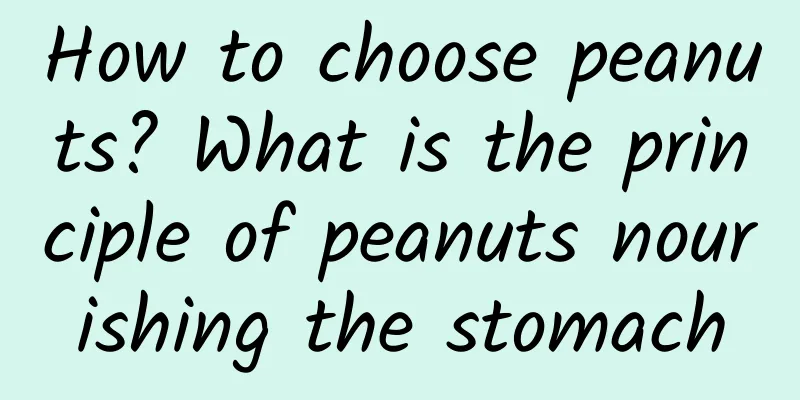Ovarian cysts during lactation

|
Ovarian cysts are a very common disease. Generally speaking, people of any age can develop ovarian cysts. Women who are breastfeeding can also suffer from ovarian cysts. Ovarian cysts are very harmful to women's health and need to be treated in time. But everyone knows that breastfeeding is a special period. Women who are breastfeeding usually cannot take medicine because they need to feed their babies. What to do with ovarian cysts during lactation? Ovarian cysts during lactation can generally be controlled and treated with medications. However, the best treatment for multiple ovarian cysts is currently hysteroscopy. Combined hysteroscopy and laparoscopy is a technical name for combined treatment of hysteroscopy and laparoscopy. It was introduced from Germany at a huge cost. Through hysteroscopy and laparoscopy technology, doctors can clearly and intuitively detect male and gynecological diseases and causes of infertility and perform surgery. Examination and treatment are carried out at the same time, reducing trauma to a minimum, making it safe and painless. However, ovarian cysts during lactation are very different. For the sake of conservativeness, patients can use traditional Chinese medicine to treat ovarian cysts. At present, traditional Chinese medicine has made certain breakthroughs in the treatment of ovarian cysts, and most of the common fluid-filled cysts can be treated. However, the efficacy of traditional Chinese medicine in treating ovarian cysts mostly stays at the level of relieving symptoms, and it is difficult to carry out radical treatment. Many patients experience recurrence of the disease during treatment, and a small number of patients experience recurrence after treatment, which has a great impact on their lives. Ultrasound interventional therapy is an advanced medical method for treating various cysts and myomas. The detailed operation is to directly puncture the diseased tissue under ultrasound guidance, and then inject drugs to make the diseased tissue quickly dehydrated, deformed and necrotic. It has six characteristics: accurate display of lesions, simple and rapid operation, obvious treatment effect, less tissue damage and pain for patients, low cost, and no radioactive damage. Symptoms of ovarian cysts during lactation: 1. Functional cyst: This is the most common cyst. It occurs in women of childbearing age during the ovulation cycle, when an abnormal amount of fluid accumulates in the follicles or corpus luteum, forming follicular cysts or corpus luteum cysts. This functional cyst can sometimes be quite large, but it usually disappears on its own within three months, regardless of medication or not. 2. Hemorrhagic cysts: Sometimes follicular cysts and corpus luteum cysts grow too rapidly, causing the ovarian tissue to be pulled and rupture and bleed. This blood accumulates in the ovary because it has no outlet, and is called a hemorrhagic cyst. This type of cyst usually disappears on its own but it may take a long time. If the physical discomfort is more obvious, you can take medicine to alleviate the symptoms. Only in rare cases, when the patient presents with more severe symptoms, does surgical resection require surgery. 3. Serous epithelial cysts and mucinous epithelial cysts: Cysts that still exist after three months of observation are likely to be epithelial ovarian cysts rather than functional cysts. This is because the serous cells and mucous cells with secretory functions are buried in the ovaries after ovulation and continuously secrete fluid to form cysts. This type of cyst will not go away and needs to be removed surgically. 4. Chocolate cyst (endometrioma): It refers to endometriosis growing in the ovaries, forming a large amount of sticky coffee-colored chocolate-like liquid in the ovaries. Because endometriomas grow larger over time, they gradually erode normal tissue and cause irreversible damage to ovarian tissue. After assessing its severity, surgery may be necessary. 5. Teratoma: This is a very special cyst. It may be caused by problems in cell differentiation during the embryonic period, and it may take a long time to manifest itself. It produces accumulation of hair, teeth and some oils in the ovaries. Since the teratoma will not disappear on its own and may continue to grow, and there is a 15% chance of causing ovarian torsion, it is best to remove it early. Generally speaking, the malignancy rate is less than one in a thousand. |
<<: What causes brown blood in the vagina?
>>: How long does it take to remove the ring without bleeding?
Recommend
Hypertension and stroke
Hypertension means that the pressure exerted by b...
What should I do if I have heavy bleeding from uterine fibroids?
Many women have some gynecological diseases, espe...
How to take care of the confinement period after caesarean section
Confinement is a period that many women must go t...
When will the Korean drama Chocolate be updated? Where can I watch the Korean drama Chocolate?
The Korean drama "Chocolate" will premi...
Where is the main vein of China's smartphone market in 2015?
According to statistics from the China Academy of...
What causes strong odor in women's urine?
Urine is human excrement. Although it does not ha...
Can I use salt water to wash my vulvitis?
Unlike men, women's sexual organs are extrove...
Cold body and kidney deficiency are very harmful to women, women must know this!
Kidney deficiency is not exclusive to men. Women ...
How should women promote blood circulation and remove blood stasis?
Many people have to get up early and work late, a...
What are the symptoms of urinary stones in women
Urinary stones are a very terrible disease, and t...
EyeTrackshop: Eye tracking technology research shows that Apple iPhone beats Android
EyeTrackshop is a company that investigates consu...
Lower abdomen pain during early pregnancy
In the early stages of pregnancy, women need to t...
What medicine should I take to eliminate uterine fibroids?
The cause of uterine fibroids is still not very c...
Foods to replenish women's yang energy
Yang Qi is very important for people. If there is...









